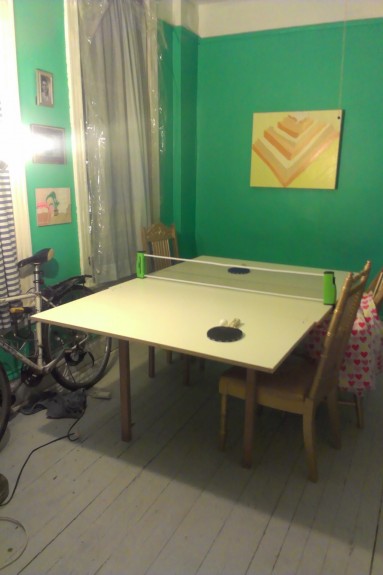Here are a few quotations that stood out to me as I was reading danah boyd’s recent work on youth and social media, It’s Complicated.
Since finishing the book, it’s been a useful frame for thinking about media stories about the Internet. While boyd’s focus and research practice was around youth use of social media, the book is a useful guide for navigating broader cultural narratives around media and technology. It feels as though youth have always been the focus of cultural aspirations and fears, so it makes sense that the way they use emerging media and the way they are framed with it, speaks to cultural attitudes and practices about the media at large.
Chapter 6: Inequality
Perhaps Robert Moses did not intentionally design the roadways to segregate Long Island racially and socioeconomically, but his decision to build low overpasses resulted in segregation nonetheless. In other words, the combination of regulation and design produced a biased outcome regardless of the planner’s intention.
The first time I read about the social impact of Moses’ plans was in Jane Jacobs’ The Death and Life of Great American Cities
This idea of paying attention to the outcome rather than the intention reminds me a lot of an awesome session I went to at the 2014 NICAR conference where Nikole Hannah-Jones talked about her reporting on housing segregation. It’s really amazing stuff. She contributed to the Propublica series Living Apart and a This American Life segment.
Chapter 7: Literacy
In a networked world, in which fewer intermediaries control the flow of information and more information is flowing, the ability to critically question information or media narratives is increasingly important. Censorship of inaccurate or problematic content does not provide youth the skills they will one day need to evaluate information independently.
I thought this was an interesting breakdown of how a bug in MySpace’s code provided an opportunity for youth to learn HTML/CSS/JavaScript with varying levels of sophistication. I’d hazard to guess that the goal of a custom profile compelled youth who would never choose to take or have access to a computer science class at their schols, to investigate these topics.
Excited by the ability to create “layouts” and “backgrounds,” teens started learning enough code to modify their profiles. Some teens became quite sophisticated technically as they sought to build extensive, creative profiles. Others simply copied and pasted code that they found online. But this technical glitch–combined with teens’ passion for personalizing their MySpace profiles–ended up creating an opportunity for teens to develop some technical competency.
Wikipedia often, but not always, forces resolution of conflicting accounts. Critics may deride Wikipedia as a crowdsourced, user-generated collection of information of dubious origin and accuracy, but the service also provides a platofrm for seeing how knowledge evolves and is contested.
How we picture the issue of digital inequality also has political implications. As communication schilar Dmitry Epstein and his coauthors argue, when society frames the digital divide as a problem of access, we see government and industry as the responsible party for addressing the issue. When society understand the digital divide as a skills issue, we place the onus of learning how to manage on individuals and families. … The burden of responsibility shifts depending on how we construct the problem rhetorically and socially. The language we use matters.
Chapter 8: Searching for a public of their own
Boyd, who apparently came of age in the same region of the United States where I grew up, often uses the shopping mall to compare and contrast digital publics inhabited by youth. Early in the book, boyd writes:
I also take for granted, and rarely seek to challenge, the capitalist logic that
underpins American society and the development of social media. Although I believe that these assumptions should be critiqued, this is outside the scope of this project. **
The way in which markets mediate teen publics is huge. My first impulse was to lament the way in which public spaces for youth are now constructed for them in ways that are ultimately exploitative. Then I remembered how many of the publics I inhabited as a teenager were fundamentally commercial spaces: grocery store parking lots, record stores, clothing boutiques, basements of student housing at expensive private colleges. Ultimately, I think paying attention to the way that youth subvert the intended uses of public space is more interesting and informative than only focusing on the way in which capital mediates spaces for youth.
** On the other hand, boyd made a PDF of the book available, explaining:
My desire to be widely read is why I wanted to make the book freely available from the getgo. I get that not everyone can afford to buy the book. I get that it’s not available in certain countries. I get that people want to check it out first. I get that we haven’t figured out how to implement ‘grep’ in physical books. So I really truly get the importance of making the book accessible.
Re: a youth carefully curating his Facebook posts but feeling like Twitter is a more intimate media.
Manu’s practice contradicts the assumptions then held by adults, who often saw Facebook as a more intimate site than Twitter because of each site’s technical affordances and defaults.
What makes a particular site or service more or less public is not necessarily about the design of the system but rather how it is situated within the broader social ecosystem. … In this way, the technical architecture of the system matters less than how users understand their relationship to it and how the public perceives any particular site.
I find that a lot of times, as someone who saw the evolution of much of the Internet and feels pretty comfortable using it’s tools, I end up using the Internet and emerging social technologies in a way that’s not very pragmatic, and as a result not very emergent.
This passage of the book reminded me of this anecdote from Cory Doctorow:
My old Informationweek editor, Mitch Wagner, once discovered some young girls holding a gossipy chat in the comments section of an old blog post of his; when he asked them what they were doing there, they told him that their school blocked all social media, so every day they picked a random blog-post somewhere on the Internet and used it as a discussion board for the day.
Other notes
In one chapter, boyd tells the story of college admission officials being shocked when an academically gifted high school student whose admission essays talked about trying to escape the gangs and violence of his neighborhood, had social media profiles, which were Googled by the admissions officers, containing references to gangs and gang affiliations. boyd argues that this isn’t contradictory, or disingenuous, it’s an example of youth deftly using different channels for different audiences for survival and mobility. Voicing gang affiliations could be necessary for survival within the student’s community and peer group, the audience of the social media profiles. Their aspirations for the future would be problematic or misunderstood by their social media viewers, but really important for officials at the college they wish to attend. Problems arise when information reaches across the intended audiences that people balancing complicated identities imagine.
I thought of this anecdote and analysis immediately when a friend shared writing about the Eagles dumping player DeSean Jackson over alleged connections to gangs.
Further reading





